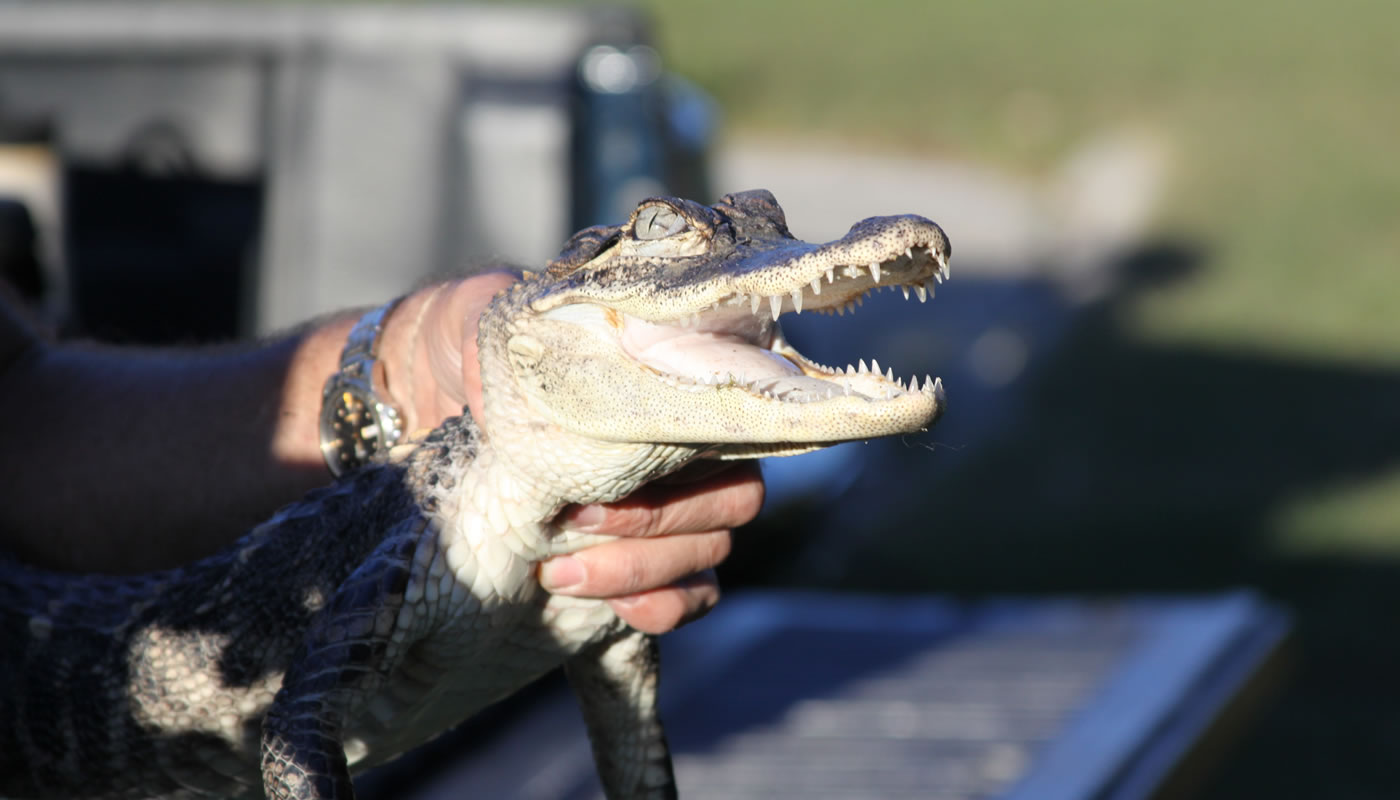A pet store goldfish may not last long under the care of a young child, but it can often thrive in a local forest preserve pond. Goldfish are prolific reproducers and bottom feeders that can quickly disrupt an aquatic ecosystem.
Both state and county law prohibit residents from abandoning pets or releasing nuisance animals outside, but a variety of exotic species are still found in preserves each year. “A lot of people think they are setting these pets free to be in their natural environment. But the reality is, these animals don’t belong here,” said Forest Preserves fisheries biologist Steve Silic. “Animals purchased in pet stores typically are not native to this exact area, because it is illegal to sell wild, native animals in Illinois,” he explained.
The variety of exotic animals, mostly former pets, found in the preserves is truly astounding. “We’ve found anything you can imagine in the 30 years I’ve been around. We’ve seen lab rats, boa constrictors, pythons, parakeets, domestic rabbits, piranhas, at least fourteen different species of exotic turtles and, of course, many cats and dogs,” said Forest Preserves wildlife biologist Chris Anchor.
Some of the strangest encounters happened in the early 1980s, when someone with an illegal exotic pet collection simply opened the animals’ cages and left the state to avoid prosecution. Over the following years, staff found porcupines, bobcats and even a kangaroo roaming around in preserves.
Most of these pets are ill-equipped to survive outside of a home environment, often falling victim to predators or harsh Chicago winters (if they make it that long). Others, like goldfish, can become invasive and cause damage to native species and ecosystems. Chinese mystery snails, walnut-sized snails most likely introduced from home aquariums, have spread across Cook County, filling a niche that should be occupied by native snails. Rusty crayfish, introduced by the pet trade or fishermen, are similarly outcompeting native crayfish.
Only some exotic species become invasive and disrupt native ecosystems, but any pet released outside can pose a potential threat to humans. “Any time you introduce an exotic species, you run the risk of exposing a native animal population to a disease they haven’t experienced before,” said Anchor. And new diseases that take hold in these animal populations don’t always stay there. Though not the result of abandoned pets, both Lyme disease and West Nile virus demonstrate how diseases can move from animals to humans here in Cook County.
The simplest way to avoid these problems is by practicing responsible pet ownership—only taking on pets you can care for and finding a new home for your pets if you are no longer able to care for them. Releasing a pet outside can impose an undue toll on the environment, and always presents an unfair fate to the animal.
Please note that the Forest Preserves of Cook County does not accept pets or wildlife at any of our locations. We encourage Cook County residents with pets they are unable to care for to contact their local veterinarian or animal shelter to explore the best options for finding them a new home. For more information on injured wildlife, see our Wildlife in Distress Page or the University of Illinois Extension’s Wildlife Illinois website.

